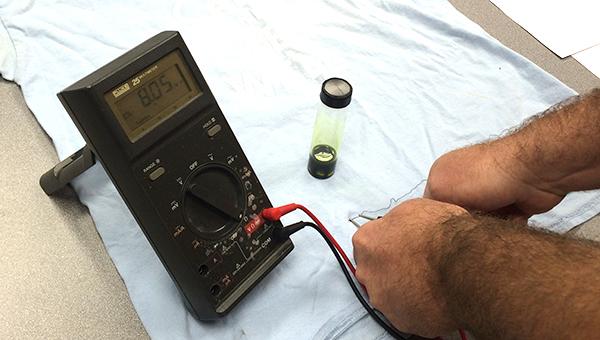A University of Alabama research team was issued patent number 8,784,691 on July 22, which covers their newly discovered process of making certain fibers conductive. The team includes Scott Spear and Rachel Frazier, research engineers for the Alabama Innovation and Mentoring of Entrepreneurs center; Robin Rogers, the Robert Ramsay Chair of Chemistry at the University and director of the University’s Center for Green Manufacturing; Anwarul Haque, associate professor of aerospace engineering and mechanics and Dan Daly, director of AIME.
The process utilizes ferric chloride instead of harsh chemicals like methanol. Methanol is volatile and toxic to humans, so using ionic liquids instead is safer and allows the fibers to retain much of their original strength.
“[Ferric chloride] can coat surfaces or fibers such as cellulose or cotton fibers very well,” Spear said “That iron can then be used to polymerize pyrrole, so then you get a nice coating on the cotton fiber. Polypyrrole is a conductive material.”
Rogers said the team is also looking for other ways to use cellulose via the patented process.
“We were looking for – and still are – new materials from cellulose,” he said. “We would like to develop a range of new functional materials from cellulose that will replace the common plastics and polymers of today, because today’s polymers are typically made from nonrenewable resources such as oil. Thus we wanted new functional polymers for everyday life that would be renewable and sustainable.”
The full implications of this technology are currently underdeveloped. Frazier said the ability to essentially have a circuit board on one’s chest via smart textiles is one of the exciting possibilities of the research.
“To be able to sense when things happen, and to be able to have it so close to you, that it can tell when something happens to you … it opens up a whole new realm of opportunity, things that we can’t imagine right now,” Frazier said. “That’s really the exciting thing.”
Their patent gives the research team exclusive rights to their process. The team can decide to license the process to companies to make new fiber products.
“Patent protection is important in the US if one wants to develop and sell a chemical product,” Rogers said. “Without this, the company’s investment in developing something new might be lost as cheaper competitors step in by essentially using what the company learned in development. In the chemical industry, patents often protect innovators to allow them a grace period where they can take advantage of their invention.”







